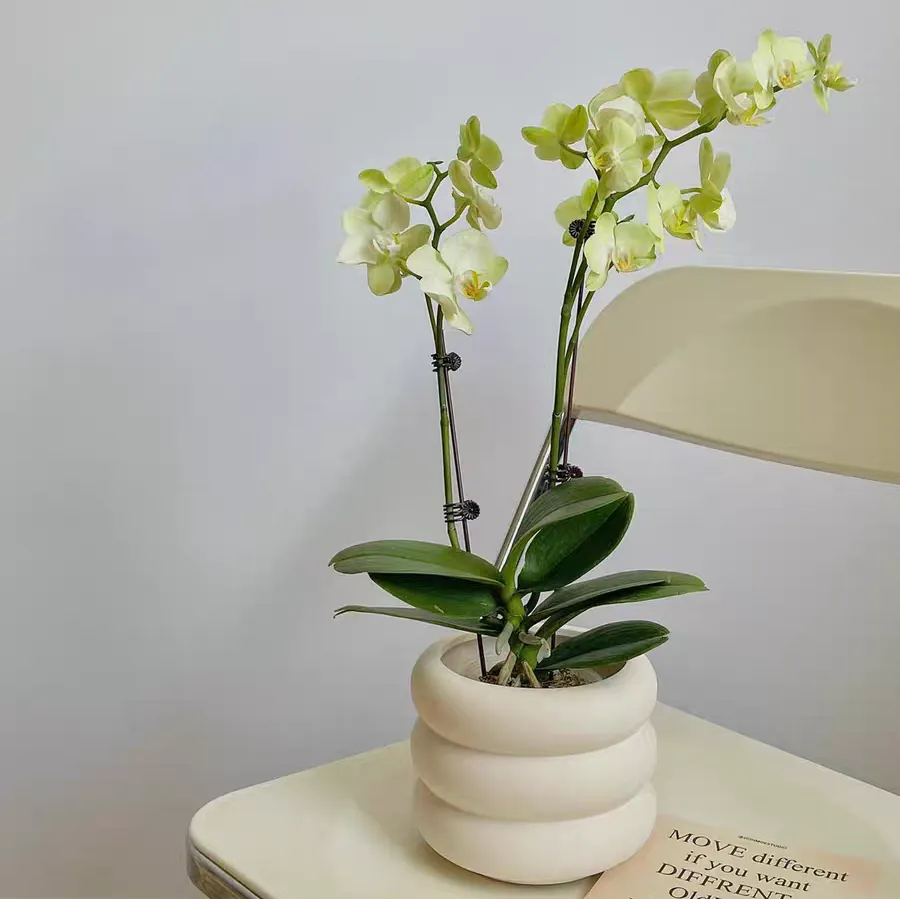Can withered and yellowed Phalaenopsis (moth orchid) flower buds be saved?

Share with
The most frustrating thing about gardening is when the flower buds you've been eagerly anticipating suddenly wilt. Here’s a breakdown of why Phalaenopsis (moth orchid) buds turn yellow and wither, along with solutions to save them.
### **I. Environmental Causes**
#### **1. Temperature Issues**
Moth orchids thrive in a stable temperature range: **25–28°C during the day** and **18–20°C at night**.
- **Problem**: Sudden temperature fluctuations (e.g., heating/cooling vents causing extreme day-night differences) or drafts can冻伤 (freeze) buds in winter, while summer balcony temperatures over **30°C** can dry them out.
- **Solution**: Use a thermometer to monitor conditions. Keep the plant away from doors/windows in winter and avoid direct AC airflow in summer.
#### **2. Light Problems**
- **Low Light**: Placing the orchid in dark corners (e.g., bedrooms, cabinets) leads to bud drop due to insufficient photosynthesis.
- **Strong Sunlight**: Direct midday sun (10 AM–4 PM in summer) can scorch buds, causing dark spots.
- **Solution**: In spring/autumn, place it on east/west windows for diffused light. In summer, use sheer curtains to filter harsh sunlight.
#### **3. Humidity Issues**
Dry air in heated northern homes or air-conditioned southern rooms causes buds to shrivel quickly.
- **Solution**:
- Use a humidifier to maintain **50–70% humidity**.
- Place a tray of water with stones under the pot (ensure the pot doesn’t sit in water).
- *Avoid* spraying water directly on buds—this can cause rot.
#### **4. Transplant Shock**
Newly purchased orchids need time to adapt:
- **Mistake**: Repotting immediately or moving the plant frequently.
- **Solution**: Keep the orchid in its original pot in a shaded area for **7–10 days** to acclimate. Skip fertilizing during this period; only water the top layer of sphagnum moss.
### **II. Plant-Related Causes**
#### **1. Root Rot**
- **Signs**: Wet, dark, or foul-smelling roots in waterlogged sphagnum moss.
- **Fix**:
- Remove the plant, trim rotted roots, and dip cuts in carbendazim (a fungicide).
- Repot in fresh sphagnum moss.
- *Never* repot during flowering—if necessary, transplant with the root ball intact and let it rest after watering.
#### **2. Nutrient Deficiency**
Orchids need consistent feeding to bloom:
- **Problem**: Lack of fertilizer or overuse of tap water leads to weak, dry buds.
- **Solution**:
- During bud formation, apply a **phosphate-potassium fertilizer** (e.g., 1g potassium dihydrogen phosphate in 1L water) weekly.
- Add slow-release fertilizer pellets to the pot monthly—use dilute solutions to avoid root burn.
#### **3. Pests and Diseases**
- **Scale Insects**: Small white spots on leaf undersides; wipe off with alcohol-dipped cotton swabs.
- **Spider Mites**: Yellow spots and webbing; spray with abamectin solution weekly for 3 weeks.
- **Anthracnose**: Black spots on buds; cut infected parts immediately, spray with thiophanate-methyl, and ensure daily ventilation.
### **III. Key Care Tips**
- **Watering**: Water only when the sphagnum moss is dry (white). Water less in winter; water in the morning/evening in summer.
- **Ventilation**: Open windows for 1 hour daily, but protect from cold drafts.
- **First Aid for Wilting Buds**: Move to a shaded area, cut off withered buds, stop fertilizing, and observe for 3 days.
- **Prevention**: Drench the roots with carbendazim solution monthly to prevent pests and diseases.
With careful observation and timely adjustments, your moth orchid can recover and bloom beautifully again! 🌸
Tagged in :




Leave a Reply